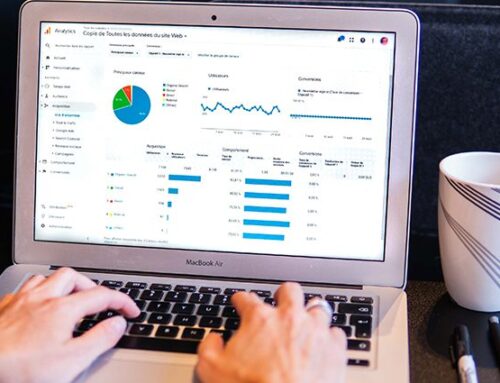Every second, Google processes around 40 000 search queries. In 2021, there was a recorded 4.48 billion social media users and on average, people spent 144 minutes per day on social media platforms and messaging apps. With every search query and with every user using a social media platform, you as a marketer have an opportunity to reach a user. How?
When it comes to online content, strategies are often split into two categories: paid and organic. And while there is a debate about which one is better between the two, the truth is that both are necessary to connect with your target audience and Charley Grey can help you get where you want to go. In fact, using a combination of both for your social campaigns will produce a better return on investment. Here is a guide to further understand them both:
Organic Reach and Paid Reach Defined
While both of these have the common goal of getting your content to your audience, paid and organic marketing each have their own specific advantages. That's why it's important to understand how each works and create a strategy combining both to create better user experiences for your audience and convert more customers.
What Is Organic Marketing?
If you want to reach existing customers who already follow you on social media and are already familiar with your brand, organic marketing or organic reach is the way to go.
As opposed to paid reach, it is not related to the direct cost of money, however, it is not completely free as well.
With organic marketing, your main goal is to increase your online presence and brand awareness in addition to audience engagement. You can do this by creating organic content with a high amount of relevant keywords that can be shared on your website and social platforms.
With these organic posts, you can attract more visitors and direct your organic audience to your site, and hopefully eventually convert them into paying customers.
In addition to that, your organic efforts affect your paid marketing efforts. If someone comes across your site organically, you can later retarget them with paid ads.
While organic is definitely a huge part of your social media marketing, the best place to spend your efforts for organic is SEO. In fact, according to a survey, organic SEO drives 1000%+ more traffic than organic social.
To measure your organic marketing efforts, take a look at which type of content is driving the most traffic to your site, which channels are driving the highest amount of converting traffic, audience insights, engagement rate, and the leads generated from those marketing campaigns.
What Is Paid Marketing?
Paid reach or paid marketing is exactly what it sounds like. With this marketing method, you use your advertising dollars for paid methods to reach, target, engage and convert potential customers.
While organic marketing is similar to word-of-mouth marketing, paid marketing is more similar to sales-focused marketing. With the latter, the main goal is to convert audiences to a specific campaign.
Strategies here include paid social media ads, paid search ads, display ads, sponsored posts, or video ads on any social marketing platform. With paid social content, video content, or other types of content, you can micro-target custom audiences and reach people who might not have encountered your business yet.
It's a quick way to drive more traffic to your website. You also get to see direct results within the hour since you'll be able to reach a massive audience with your online advertising.
You can measure the success of your efforts here by driving impressions, achieving high conversion rates, and return on ad spend.
How To Integrate A Paid And Organic Marketing Strategy
To use both in achieving your business goals, you'll have to use organic to boost existing customer relationships by serving and delighting current customers and use paid to attract new eyes. Here's how you can go about it:
1. Only Pay For Promotional Posts That Need To Be Paid
Ads aren't always the answer. You also have to remember that you should only pay for ads that can actually help you hit your KPIs and reach your business goals. Sometimes, an organic campaign could hit the numbers you're looking for.
For instance, if you have an announcement to make, your existing followers need to be informed. Craft a compelling, original, and creative post and let them build the buzz all on their own.
If your organic activity isn't getting the reach or impressions you're hoping for, however, it might be time to open your wallet, create a daily budget, and invest in social advertising.
2. Boost Your Best Organic Content
Your top-performing social posts aren't just there for vanity metrics. They can be your entry into a larger audience.
When you notice that you've got a hit on your hands, consider spending some social media budget to boost it and get it in front of new eyes. This can help get you in front of an ideal customer who hasn't heard of you yet. If you have high-quality content that is also relevant content to these new people, you can get new customers.
3. Target Your Ads To People Similar In Your Organic Audience
As you grow your organic audience, you'll have access to more data about your ideal customer. Capitalize on this data to build your ads.
Most social platforms offer the ability to create a lookalike audience that you can base on your best customers. This will be composed of people with similar behaviors and demographics who haven't been introduced to your brand just yet.
4. Optimize All Your Posts Using A/B Testing
Before you pitch in all your social media budget to one ad, test it first to a smaller audience. Test individual posts and see how your copy, your visuals, your CTA, the ad format, ad placement, and also audience targeting is doing.
By doing this, you create a more memorable, enjoyable, and successful ad for your broader audience which is also cheaper for you.
5. Always Look At Your Data And Measure Your Results
Whether it's organic or paid, watching a campaign flob is just painful. By paying attention to your social analytics tools, you can see where you need to make changes to get better results.
By monitoring these results, you can act fast to make adjustments as needed. For instance, if a Facebook ad is doing well, you can increase ad spending to support it.
6. Automate As Much As Possible
The bottom line with combining paid and organic is that it will keep you busy. To help avoid it from eating up your time, automate as much of your everyday workflow as you can. Schedule organic posts in advance, streamline your copyediting and approval process or set up triggers for boosted posts. You can also use social media management tools to make it easier.
When it comes to deciding what's best between the two, there is no definite answer for everyone. Every business has different goals and more often than not, it's better to work with a combination of both to achieve those goals.
Let Charley Grey Help You Navigate it All
When it comes to your digital marketing and understanding which type of reach to use and when, let Charley Grey handle it all of you.
Our digital marketing agency not only produces stunning websites that put businesses on the map, but they can also help with all your Google, Facebook, and LinkedIn paid ads. So, if you want to learn more about our services and what we can do for you, contact us today!








